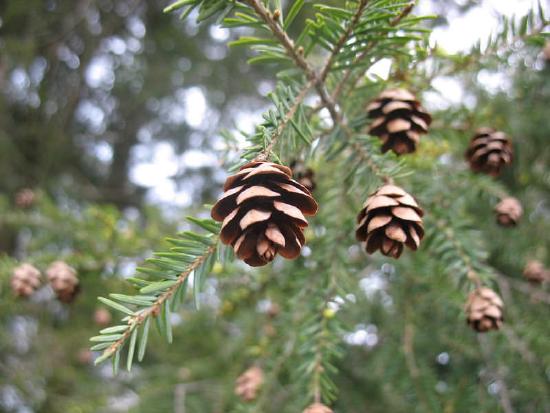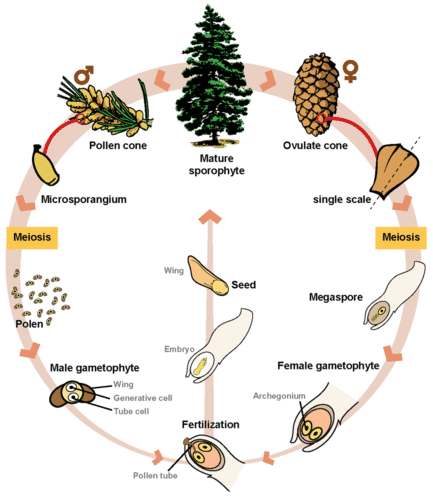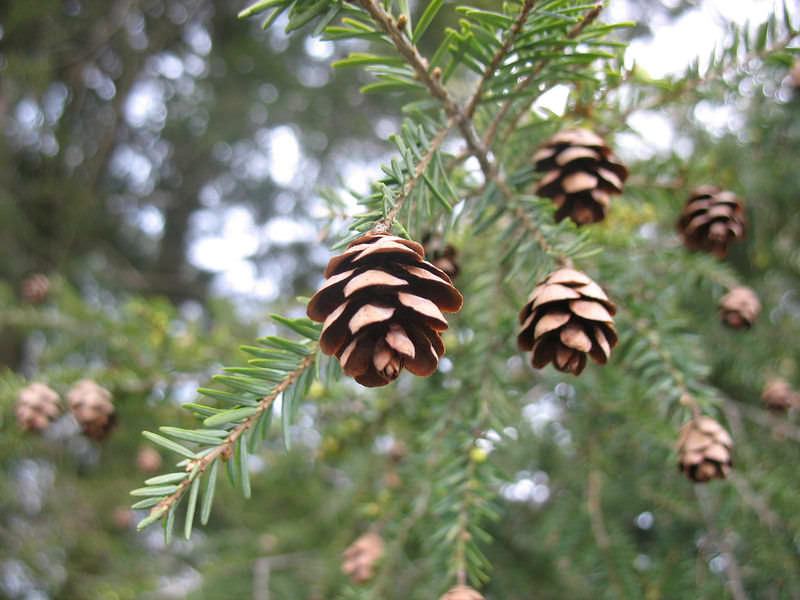9.12: Life Cycle of Gymnosperms
- Page ID
- 12234

Do pine trees produce flowers?
Of course not. But look closely at these pine cones. Notice the shape. Can you see the "petals?" They do seem oddly similar to flowers. These pine cones have a prominent role in the gymnosperm life cycle. So what is the function of a pine cone?
Life Cycle of Gymnosperms
Gymnosperms are vascular plants that produce seeds in cones. Examples include conifers such as pine and spruce trees. The gymnosperm life cycle has a dominant sporophyte generation. Both gametophytes and the next generation’s new sporophytes develop on the sporophyte parent plant. Figure below is a diagram of a gymnosperm life cycle.
 The gymnosperm life cycle follows the general plant life cycle, but with some new adaptations. Can you identify them?
The gymnosperm life cycle follows the general plant life cycle, but with some new adaptations. Can you identify them?Cones form on a mature sporophyte plant. Inside male cones, male spores develop into male gametophytes. Each male gametophyte consists of several cells enclosed within a grain of pollen. Inside female cones, female spores develop into female gametophytes. Each female gametophyte produces an egg inside an ovule.
Pollination occurs when pollen is transferred from a male to female cone. If sperm then travel from the pollen to an egg so fertilization can occur, a diploid zygote results. The zygote develops into an embryo within a seed, which forms from the ovule inside the female cone. If the seed germinates, it may grow into a mature sporophyte tree, which repeats the cycle.
Summary
- In gymnosperms, the gametophyte generation takes place in a cone, which forms on the mature sporophyte plant.
- Each male gametophyte is just a few cells inside a grain of pollen. Each female gametophyte produces an egg inside an ovule.
- Pollination must occur for fertilization to take place. Zygotes develop into embryos inside seeds, from which the next sporophyte generation grows.
Review
- Describe how gymnosperms use cones to reproduce.
- Create your own cycle diagram to represent the life cycle of a gymnosperm.
| Image | Reference | Attributions |
 |
[Figure 1] | Credit: Mariana Ruiz Villarreal (LadyofHats) for CK-12 Foundation Source: CK-12 Foundation License: CC BY-NC |
 |
[Figure 2] | Credit: Mariana Ruiz Villarreal (LadyofHats) for CK-12 Foundation Source: CK-12 Foundation License: CC BY-NC 3.0 |

